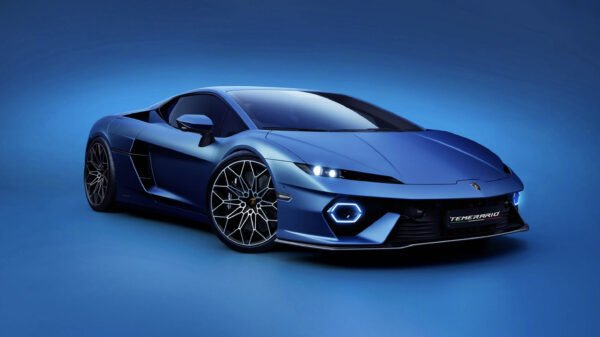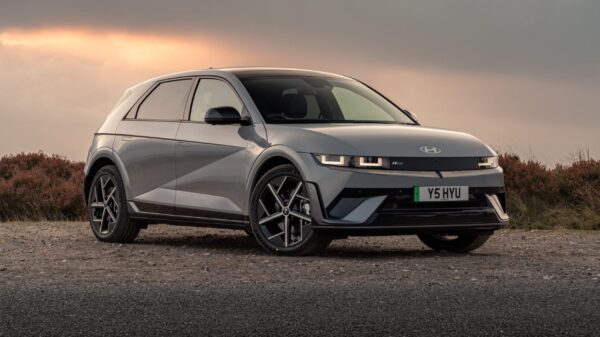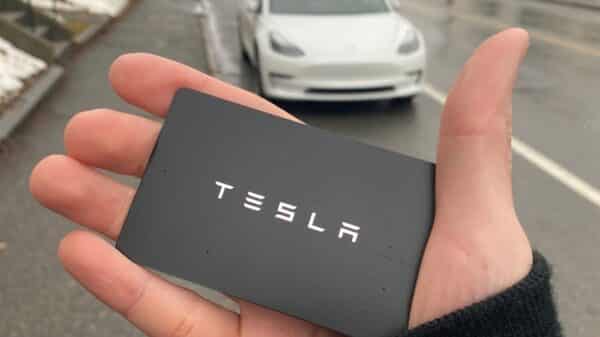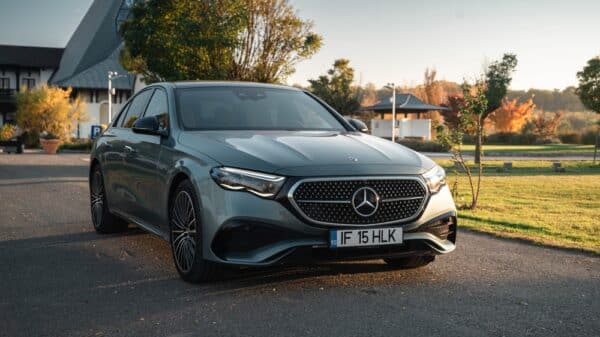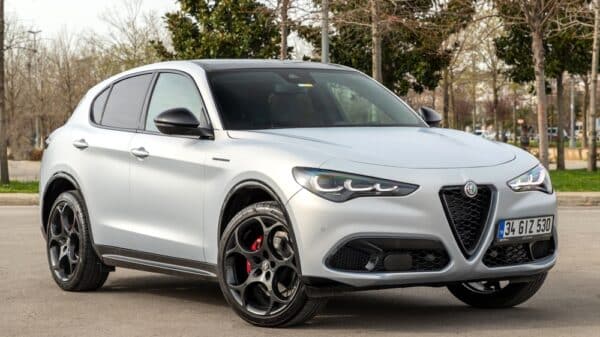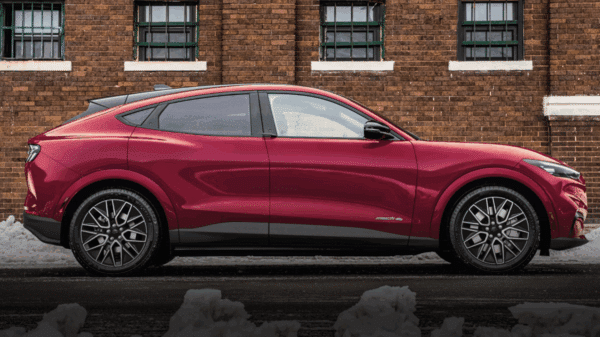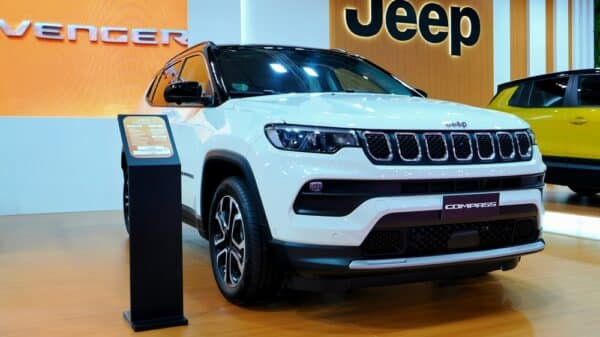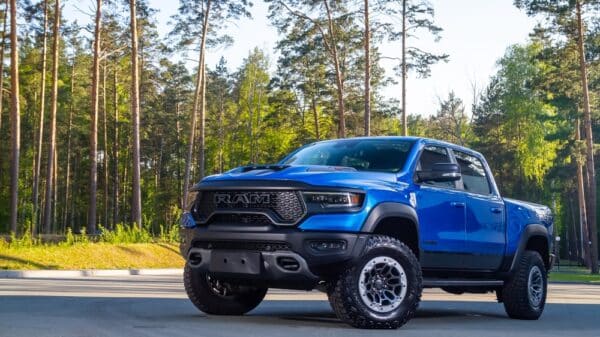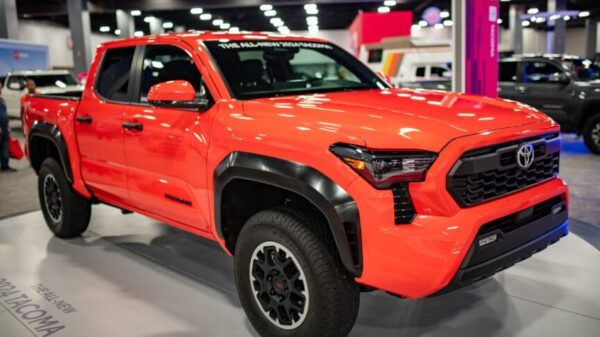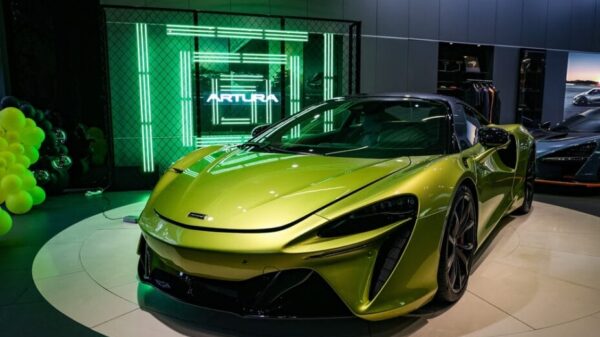Polestar has faced challenges in establishing its distinct identity since its inception as a standalone brand in 2017, having originally emerged from Volvo’s performance division. The close relationship between Polestar and Volvo remains evident, considering both brands share components and collaborate on engineering, operating under the Geely Group umbrella. However, the introduction of the Polestar 4 may signal a pivotal moment for the brand, allowing it to carve its own niche in the electric vehicle (EV) market, especially as Volvo intends to keep selling combustion engine models for several more years.
The Polestar 4 takes the form of a sophisticated coupe-shaped crossover that positions itself between the now-discontinued Polestar 2 in the U.S. market and the more substantial Polestar 3 SUV. I recently had the chance to drive the U.S. version in Austin, Texas, to assess its potential in revitalizing Polestar’s American business. After spending an afternoon behind the wheel, I found that the Polestar 4 radiates character through both its driving dynamics and interior ambience. While it may lag behind some competitors in technical specifications, its striking design and enthusiast-friendly driving experience speak volumes about its appeal.
Polestar 4: Overview and Specifications

Polestar 4
Interestingly, the Polestar 4 shares more similarities with the Zeekr 001 than with its sibling models. Built on Geely’s Sustainable Experience Architecture (SEA), which is also employed in the Volvo EX30, the Polestar 4 boasts impressive specifications but doesn’t quite match those of the Zeekr. Unlike the Zeekr 001, which benefits from a 900-volt architecture that allows it to charge from 10% to 80% in merely seven minutes, the Polestar 4 operates on a 400-volt system.
This allows its 100-kilowatt-hour CATL battery to charge from 10% to 80% in 30 minutes at a peak rate of 200 kilowatts—a performance that remains competitive with the Tesla Model Y. While it may not lead the pack in charging speed, it does perform effectively in its class.
Despite these differences, Polestar engineers have incorporated several components from the Zeekr 001, including elements like battery pack components, drive motors, and even seat structures. However, the calibration of the suspension and brakes is distinctively tailored for the Polestar 4, showcasing its unique character.
The Polestar 4 will come in two configurations: a single motor and a dual motor. The single motor model delivers 272 horsepower and 253 pound-feet of torque to the rear wheels, achieving an EPA-estimated range of 310 miles. In contrast, the dual motor variant generates an impressive 544 horsepower and 506 pound-feet of torque, with a range of 280 miles and a notable 0-60 mph sprint in just 3.7 seconds.
2026 Polestar 4
As-Tested Price: $62,900, before destination.
Base Price: $56,400, before destination.
Battery: 100 kilowatt-hours, usable, CATL cell-to-pack.
Charge Time: DC: 10% to 80% in 30 minutes (200 kilowatts).
Charge Type: CCS [NACS adapter available].
EV Range: 280-310 miles.
Maximum Speed: 124 miles per hour.
Maximum Torque: 253 lb-ft RWD, 506 lb-ft AWD.
Output: 272 hp RWD, 544 hp AWD.
Speed 0-60 MPH: 6.9 secs RWD, 3.7 secs AWD.
Weight: 4,916 lbs to 5,192 lbs.
Performance and Driving Experience
From behind the wheel, the dual-motor configuration offers exhilarating acceleration, propelling the car with relentless torque that creates a thrilling driving experience. Moreover, the Polestar 4 provides a variety of driving modes, including a range mode that optimizes efficiency by decoupling the front motor, and a performance mode that unleashes full power.
Despite its nearly 5,200-pound weight, the Polestar 4 handles exceptionally well, thanks to adaptive dampers and precise steering. The suspension settings offer a balance between everyday comfort and spirited driving, allowing it to corner flatly and transition smoothly through turns.
For those yearning for a sporty drive, turning off traction control reveals a more playful side to the Polestar 4, allowing for controlled four-wheel drifts. However, the rear-wheel-drive version feels more approachable and agile, making it a better choice for day-to-day driving unless you frequently encounter challenging weather conditions.
Design and Interior
Polestar opted for a rear-window-less design to maintain the vehicle’s coupe-like silhouette, incorporating a rear camera that feeds into a digital rearview mirror. Aesthetically, the Polestar 4 stands out as one of the most attractive crossovers available, with well-proportioned lines and striking LED headlights that enhance its modern appeal.
The vehicle’s interior encapsulates a sense of premium sophistication, highlighted by a 15.4-inch horizontally oriented center display operated by Qualcomm’s 8155 chip. This cutting-edge interface runs on Google’s Android Automotive OS, featuring native apps and wireless Apple CarPlay. The integration of features like Google Maps enhances the driving experience.
Using sustainable materials, including the Tailored Knit upholstery, which is 85% sustainably sourced, adds to the environmentally friendly ethos of the brand. The gigantic panoramic roof adds an expansive feel to the cabin, making it light and airy.
Conclusion
The Polestar 4 is set to hit the market this fall, priced at a starting point of $56,400 for the single-motor version and $62,900 for the dual-motor variant. Its pricing is competitive, particularly against emerging models such as the BMW iX3 and Mercedes-Benz GLC EV, yet it remains slightly more expensive than offerings from Tesla and Cadillac.
Despite challenges, including a loss of federal tax credits and heightened competition, the Polestar 4 has the potential to resonate with customers seeking an engaging and stylish electric vehicle. Its distinct design, cutting-edge technology, and energetic driving experience position it as a notable contender in the electric crossover segment.






